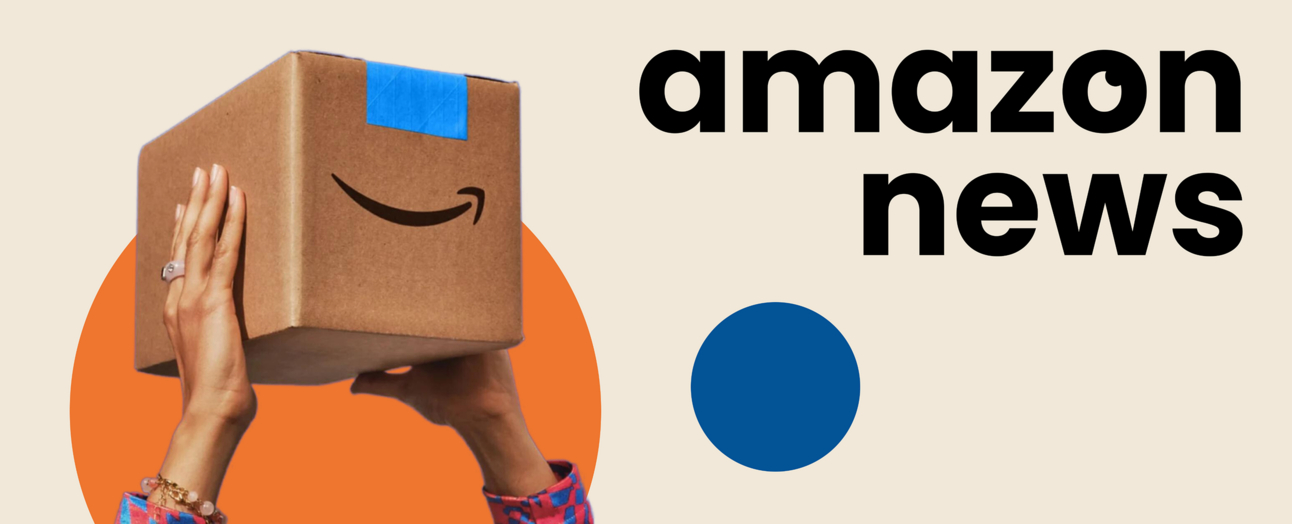Turns out, Amazon’s old-school doc culture (yep, the one Jeff Bezos practically canonized) is still alive and kicking in 2025.
PowerPoints? Still persona non grata. Meetings? They kick off with silent reading. And decision-makers? Still cranking out narrative memos like it’s 2006.
Love it or loathe it, Amazon’s still betting big on clarity through writing.
Maybe that’s the real secret sauce.
- Alexa accused of spying—even when you don’t say her name 👀
- Beat Amazon’s own repricer by 15 minutes ⏱️
- Amazon could dethrone USPS in package delivery 📦
- Gen Z’s spending on digital nostalgia 🕹️
Sign up for Walmart Insiders to get one growth hack every week. 🛒

HOT TOPIC
According to Reuters, Amazon is officially on the hook for a nationwide class-action lawsuit, and Alexa’s the one talking.
A federal judge in Seattle ruled that millions of Alexa users can band together to sue Amazon for allegedly recording their private conversations without consent—the kind where no one said 'Alexa' first.
🎯 The claim
This isn’t just about rogue smart speakers. Those suing Amazon say the company:
- Secretly recorded private convos (not just voice commands)
- Used the recordings to help its marketing and product development teams
- Never told users any of this was happening
They’re not just asking for money, they want Amazon to delete every voice recording and related data it’s ever stored.
🧑⚖️ Who can sue (and who can’t)
The judge approved a nationwide class, but with limits:
- Included: Users who registered at least one Alexa device
- Excluded: People who lived with an Alexa device but didn’t register it themselves
- Also out: Separate class requests for California and other states
🗣️ Amazon’s response
Amazon denies it did anything wrong. The company says Alexa is built with safeguards to avoid accidental recordings, and there’s no solid proof anything private was ever captured—let alone misused.
But now, with this case moving forward, Amazon’s not just facing legal risk. It’s got a PR fire to put out involving one of its most consumer-facing products. 🧯

BITES OF THE WEEK
- ‘Four’ the Win: Amazon's four-day extended Prime Day numbers are up to $24.1 billion, topping forecasts.
- July Recap: Here's a quick rundown of ecommerce news, tools, services, and updates for July.
- Catching Up to Cybercrime: A novel approach adapts crime script analysis theory for easier criminal profiling.
- Business On Course: Ecommerce businesses can learn a thing or two from these top courses.

AMAZON NEWS
USPS may lose its shipping throne to Amazon

Amazon is on pace to out-deliver the U.S. Postal Service by 2028. Yup—you read that right.
Supply Chain Dive reported that Pitney Bowes projects Amazon will ship 8.4 billion domestic parcels, just edging out USPS’s projected 8.3 billion.
Amazon already blew past UPS and FedEx. Now it’s coming for the last titan standing. 📦
🚚 How Amazon got here fast
This shipping surge isn’t accidental, it’s engineered. Here's what’s driving it:
- Blistering growth: Since 2015, Amazon Logistics has gone from startup mode to full-on shipping powerhouse.
- Less UPS, more self-reliance: UPS is slashing Amazon deliveries by 50%, nudging Amazon to scale its own fleet.
- Amazon Shipping: The company is expanding beyond its own marketplace and creeping into direct competition with legacy carriers.
📉 Legacy carriers are losing ground
While Amazon goes full throttle, the traditional players are feeling the pressure:
- Revenue per parcel is falling: Price cuts and surcharges barely held value, dipping to $9.09 per parcel in 2024.
- USPS shows a pulse: Thanks to Ground Advantage, USPS hit 6.9B parcels—its first volume growth since 2020.
- Alt-carriers are gaining: Smaller delivery companies shipped 780M parcels, up 22.6% YoY.
📬 Signed, sealed... soon to be dethroned?
Amazon’s endgame isn’t just shipping—it’s control. Owning the delivery pipeline means faster fulfillment, potential cost cuts for sellers, and fewer middlemen.
But with that scale comes a familiar tradeoff: efficiency over independence. If Amazon tops USPS by 2028, it won’t just dominate ecommerce—it’ll become the infrastructure that powers it.

TRENDING TOPIC
Is digital nostalgia the key to Gen Z's wallet?

Forget AI for a sec, CustomerThink says the real marketing heat is coming from digital nostalgia.
Gen Z is eating up ‘90s and Y2K aesthetics, and brands are cashing in by turning retro into revenue.
High-impact, low-cost
- Visual design. Retro visuals are having a full-circle moment and they’re driving engagement. 🎨
- Color palettes that scream vintage
- Pixelated type, bubble letters, and metallics
- VHS fuzz, loading bars, and static textures
- Memes that time travel. Sincerity is out, irony is in. And Gen Z’s got jokes. 📲
- Nostalgic references go viral.
- Retro memes humanize brands. Think less “buy now,” more “remember this?”
- Campaigns made to rewind. It’s not just about looking nostalgic, it’s about bringing it back. 🔁
- Product reboots like Crystal Pepsi, vintage Nike still sell.
- CRT monitors, boomboxes, and glitchy filters help sell the story.
🧠 Nostalgia converts
Gen Z’s nostalgia isn’t about reliving the past—they never lived it. It’s about escaping hyper-curation and finding authenticity in the analog.
Even “inherited nostalgia” hits differently when everything else feels too polished.
For sellers targeting Gen Z, the strategy is simple: don’t reinvent—recycle (aesthetic included).







